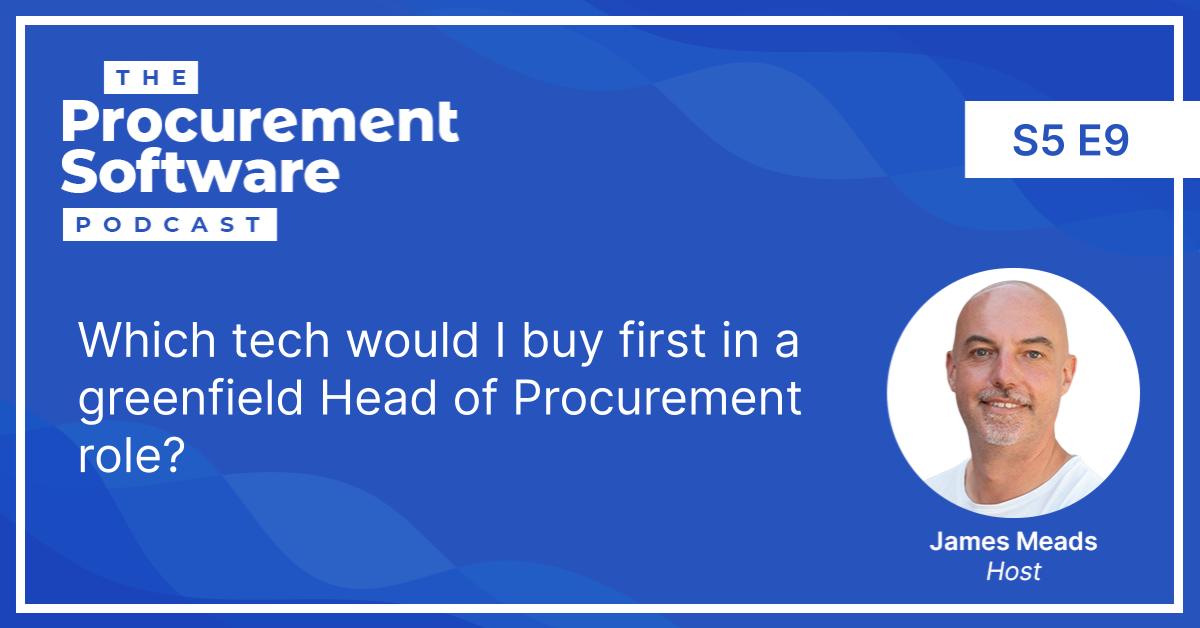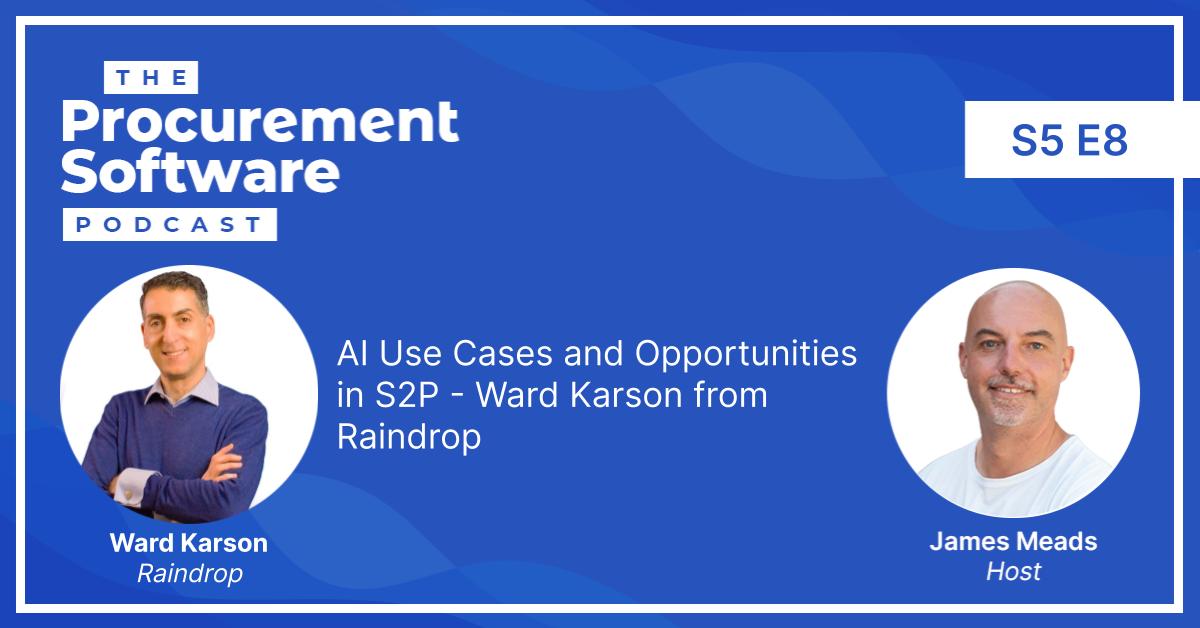This week we’re looking at something we rarely talk about on the podcast – the public sector.
Insights on Source-to-Pay technology in the Public Sector
My guest this week is Grant Smith, COO of Elcom. He’s here to lend his expertise, which is handy because the public sector is a topic I know relatively little about.
Grant hails from the UK, but his experience should be applicable to public procurement in any developed markets.
A brief overview of Elcom
We kick off with a brief history of Elcom.
It started out in the US in the early 90s as a hardware reseller. They developed a piece of software with MIT in Boston to run the ordering and procurement process for the business. When the dotcom bubble burst in the late nineties, they sold the hardware business and began to focus on the software side of things instead.
In 2001 they were offered the Scottish government’s P2P service, which they’re still running. It’s run as a shared service by the Scottish government, for and on behalf of the entire Scottish public sector, processing nearly 8 billion pounds worth of public sector spend each year.
Elcom also does work across the UK in the health and education space, where the software covers sourcing, contract management, P2P, inventory, point of care, analytics, and more, along with supplier services such as bid management.
It’s a full stack suite, just in a very specific niche. And with such a saturated market, it’s important to carve out that niche if you want to survive.
How is public procurement different from the private sector?
The main difference is that the public sector is quite heavily regulated. There are thresholds in terms of the value of goods, works, or services that you’re buying that need to be advertised and go through a formal process.
For example, in sourcing, there are procedures that must be followed quite rigigly. In the private sector, you go out, you get your quotes and you make a decision on who you’re awarding to.
But on the public side, there are a lot more rules to follow: Minimum number of bidders, the ratio between price and technical, and the documentation you need to go through, should the procurement be challenged. There are many more hoops to jump through on the public side, especially post award.
We then move on to discussing some tangible examples of what we can learn from public procurement, and focus first on healthcare.
What are the benefits of digitisation in public sector health care?
Grant’s UK-centric experience means that he’s used to working in health care as part of the public sector. This is of course not the case everywhere in the world, for example in the US. But he’s seen interesting things in the UK’s inventory and point of care space that are applicable worldwide.
In UK healthcare, there’s a good initiative called ‘scan for safety’, whereby consumables are regularly barcode scanned to capture data and keep track of things during a procedure. The software captures information like stocktake data, items consumed during a procedure, who’s in the room, and where a procedure takes place.
An innovation here is RFID (radio frequency identification) , which could really revolutionise the provision, costing and tracking of care in a clinical environment.
With barcodes, the problem is having to label everything manually: Staff need barcodes on their badges, each individual item has to be packaged with a label, and those labels need to be scanned by hand. It’s labour intensive, and cost prohibitive.
RFID, though, removes this practical barrier. You don’t need to apply barcodes to each and every item. Now the software can use either the RFID or the barcode, and this is already reducing costs.
The revolutionary benefits of RFID
Think of the day when manufactures put RFID packaging on their items, as they do now with barcodes. You’d have RFID tags on every item, and also in each location. Stocktaking, which is now a heavily manual process, would be made much more straightforward. A simple RFID reader could gather the data and pass that on to the software automatically.
This aligns with these initiatives, allowing for a better, more granular data capture with much less manual work.
RFID could also be a huge boon to general manufacturing, as a very viable solution for things like store room spare parts. It could also solve the common problem of items going missing because they’re not being booked out of storerooms correctly.
We’re already seeing this in retail – some supermarkets (and Amazon’s new convenience stores) now allow you to pick up items, put them in your basket, then walk out the door while the store automatically charges your credit card. And this is almost certainly going to be important technology for procurement, going forwards.
Digitisation in local government procurement
We talk about the big focus on ESG, and making sure it’s embedded into the procurement process, and also how local governments are often keen on awarding business to small and medium sized enterprises.
Are these objectives conflicting, when we look at the increased amount of bureaucracy around ESG, considering smaller businesses might not have the resources to handle such in-depth compliance? How can Elcom help with this?
One of the biggest complaints from small businesses, especially in the UK, is that public procurement is too bureaucratic. When a tender is released, many SMEs are put off by what’s required, and ESG is definitely a factor there.
In the sourcing and contract management space in particular, we’re seeing a move towards including ESG factors. It’s common now for an awarding authority to ask for a commitment plan on environmental impact, a commitment on not paying less than minimum wage, or for a statement on gender pay gaps. They may also ask how your business practices can positively impact society – things like taking on young adults and training them for the benefit of society at large.
While all this is admirable, it definitely creates barriers for small businesses, and could create the risk of giving an advantage to big business.
Data analytics and granular visibility
Elcom aims to mitigate this risk through the benefits of visibility.
Looking at the data and analytics angle, Elcom takes spend data, cleans, categorises and augments it, and can then give deeper insights into spend.
From a single line of this data, they can start to deconstruct who that supplier is, where they’re located and the nature of that supplier – whether they’re an SME or not.
Regardless of whether this data is being skewed by large businesses, having the information can help to nail down the type of spend, and what impact that has in terms of ESG. This should, in turn, influence what the public sector is buying, if that’s the way society wants to go.
Giving this visibility into spend should not disenfranchise smaller businesses.
As long as the vendor can be identified as a corporate entity, that can lead to additional data in terms of wider social or environmental criteria.
Elcom brings in data from other sources to give a clearer picture of an organisation. This solves the classic problem of the duplicate supplier, or supplier being identified in different ways. For example, by bringing in data from Companies House, the charity commission, the care equality commission and other sources, Elcom can ‘roll up’ duplicate suppliers into a single parent / child entity.
Take the large UK supermarket chain Tesco as an example, they have a single headquarters in Welwyn Garden City which would be referred to as the parent entity, then each individual supermarket throughout the country would be identified as a child entity.
This is particularly useful when gauging local impact, as it helps to gauge what’s happening at a local level, store by store. Money can be spent locally by these child entities, and isn’t necessarily always paid back to headquarters in a simple way.
Elcom and eSourcing
Elcom has an integrated eSourcing function within it as a source-to-pay solution, rather than procure-to-pay – what drove Grant to offer this, rather than partner with a best of breed for eSourcing, considering this is such a saturated market?
And why choose this over a less work-intensive P2P system?
Firstly, the Elcom software is modular. So a lot of Elcom’s clients do already have a sourcing solution in place that can be integrated instead. But there are still authorities out there, especially in the public sector, who don’t. So there’s still a demand for Elcom to offer that kind of software.
It may require a lot of upkeep to manage, but for now the numbers still add up and Elcom can generate revenue on this front.
Also, there’s a difference between a quick sourcing request and a more strategic sourcing exercise. And the public sector’s sourcing needs are fundamentally different to those of the private sector.
We wrap up the podcast by asking Grant where you can follow his work at Elcom, or get in touch.
Stay in touch
- Connect with Grant on LinkedIn
- Vist Elcom’s website
- Visit ProcurementSoftware.site
- Sign up for the Procurement Software Newsletter
- Book an Intro Call and let’s talk all things Digital Procurement!
- Connect with James on LinkedIn
- Follow Procurement Software’s LinkedIn Page


